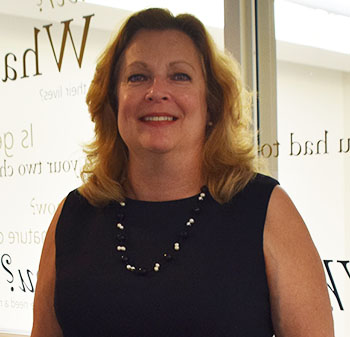
Nancy Saul
Indexing USC Shoah Foundation’s new testimony collection from Jewish Family and Children’s Services (JFCS) of San Francisco was an ideal continuation of the work Nancy Saul has done for much of her career.
Saul spent 10 years as the reference and information services librarian at the Simon Wiesenthal Center in Los Angeles and also ran the center’s “Ask a Survivor” outreach program, so she was no stranger to testimony when she began working on the JFCS collection at USC Shoah Foundation in January 2014.
USC Shoah Foundation’s indexing system allows users of the Visual History Archive to use 62,882 keywords and nearly 1.8 million names to search the archive’s 52,000 testimonies down to the minute. Typically, staff who are hired to index new collections have backgrounds in history, languages and/or library science and cataloging. Their job entails cataloging each testimony according to the interviewee's biographical information, and deciding which keywords most accurately describe what the interviewee is talking about in each minute of the testimony.
A small group of staff was hired in January 2014 to index the newly-acquired JFCS collection. After an initial training session on-site at USC Shoah Foundation’s office in Los Angeles, the indexers continued working full-time from home, using USC Shoah Foundation’s indexing software to each complete several hours of testimony per week.
Watching such a large number of Holocaust survivor testimonies gave Saul some new insights into the life experiences of survivors, especially after the war was long over. Many demonstrate immense gratitude for the countries they moved to after the war, where they usually found great personal and professional success.
“It shows how people can turn their lives around from the depths of despair to, perhaps, the American dream,” Saul said. “You were cheering for them at the end of the testimony many times.”
Saul was impressed by the sense of humor many survivors displayed in their testimonies, which was something she didn’t expect to find.
She was also interested in stories the survivors told about acculturation in their new homes after the war. In one memorable testimony she idexed, a man told a story about working in a gas station in San Francisco. On his first day on the job, a woman drove up to the gas pump and asked for “two bits of ethel.” Completely confused by the modern slang, the man ran inside to call his wife, who spoke better English than he did, to ask what in the world the woman was saying (turns out, she was asking for 25 cents’ worth of gasoline).
Saul said it was a challenge working independently from home because she is outgoing and enjoys working with others. She was also very aware of the great responsibility she had been given: to accurately represent a survivor’s entire life story for posterity. It was tough to walk the fine line between including too much detail in her indexing and not enough, she said.
The reunion event at USC last week, in which the JFCS collection indexers reunited to celebrate the completion of their work on the collection, was a great opportunity to reconnect with her colleagues, Saul said. “It was a nice way to honor the project and put a nice little bow on it,” she said.